.
.
photo by Matt Baker
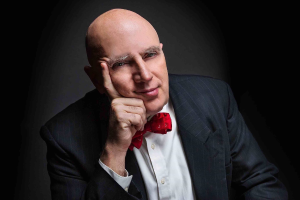
Will Friedwald, author of Straighten Up and Fly Right: The Life and Music of Nat King Cole
.
.
___
.
.
…..Best known among audiences as one of the most popular singers of his era, what placed Nat King Cole apart from many other great artists of the 20th Century was that he was also a masterful instrumentalist. As one of the great jazz pianists of all time, he accompanied legendary musicians like Lester Young and Charlie Parker (Dizzy Gillespie even cited him as his favorite keyboardist), and the King Cole Trio that he assembled in 1937 became the prototype for small group jazz ensembles. His piano playing was so admired it influenced a generation of players, among them Bill Evans, Oscar Peterson, Hank Jones, Ahmad Jamal, Bud Powell and Tommy Flanagan.
…..It is hard to overstate Cole’s success as a singer. Over 100 of his recordings were hits on the pop charts, among them “The Christmas Song,” “Orange Colored Sky,” “(I Love You) For Sentimental Reasons,” “Sweet Lorraine,” “Nature Boy,” “Mona Lisa,” “Smile,” and “Unforgettable,” a hit in 1951 that was triumphantly re-released in 1991 as a duet with his daughter Natalie. He consistently performed these songs – ballads and swingers alike – with unique charisma, charm and self-confidence.
…..Cole was the first Black man to have his own network television show, and, despite all the artistic challenges posed by popularity and fame, his work was rarely compromised – his music maintains its magic and remains relevant and captivating 55 years after his passing.
…..Describing the importance of Cole’s career, Will Friedwald, author of Straighten Up and Fly Right: The Life and Music of Nat King Cole, writes, “In his relatively short time on earth, Nat King Cole would not only change the meaning and the sound of both jazz and popular music several times over, but he would also significantly alter the public perception of what it meant to be black.”
…..The story Friedwald tells in his impeccably detailed and wonderfully entertaining biography is of Cole the creative visionary, the bandleader, the immensely popular entertainer, the family man, and the civil rights icon who, in his brief life, successfully navigated the challenges and complexities of his era.
…..In an August 13, 2020 interview, Friedwald – a leading historian of the singers of the Great American Songbook, and whose previous books include the 1996 ASCAP Deems Taylor award winning Sinatra! The Song is You! – discusses Cole and his book with Jerry Jazz Musician Editor/Publisher Joe Maita.
.
.
___
.
.
.
photo by William Gottlieb/Library of Congress
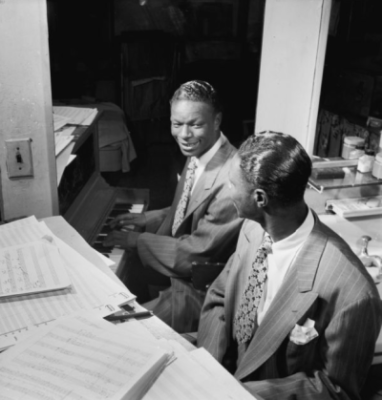
Nat King Cole, New York, N.Y., ca. June 1947
.
___
.
“No other figure in American music ever succeeded so well at two entirely different pursuits. He was at once a major instrumentalist and then a major singer; there were precedents, but no one who did quite what he did – Louis Armstrong or Fats Waller, for instance, were both outstanding jazz players who doubled as equally brilliant jazz singers. But only Cole completely mastered the equivalent of two different instruments in what amounts to two different fields, being at once one of the greatest pianists in all of jazz as well as one of the most popular vocalists who ever lived. In fact, he succeeded so overwhelmingly as a pop singer that most people even forgot that he had ever played the piano. By comparison, Frank Sinatra was a popular vocalist who occasionally made a jazz album, while Ella Fitzgerald was a jazz artist who frequently added a pop dimension to her work. But only Cole was both indisputably jazz and inarguably pop at the same time – and virtually all the time.”
-Will Friedwald
.
.
Listen to the 1957 recording of Nat King Cole singing Cliff Burwell and Mitchell Parish’s “Sweet Lorraine,” with John Collins (guitar), Charlie Harris (bass), Lee Young (drums) and Harry “Sweets” Edison (trumpet)
.
JJM What is your first memory of Nat King Cole?
WF A lot of people would probably remember Nat as a popular singer, which was in the latter part of his career, but pretty much from the beginning I was aware of the earlier recordings of the King Cole Trio, and maybe even more so his work on the famous recorded jam sessions with Lester Young. This goes as far back as I can remember, being aware that he was not just a leader of a group but a participant in classic jazz recordings.
JJM I am old enough to remember when Nat King Cole was alive, but at that time I only knew him as a pop singer I would see on television, and whose recordings were heard on all the AM radio stations in San Francisco. Also, my dad played in his orchestra at the Circle Star Theater in San Carlos, California, so my mom and I were lucky enough to be in attendance at that show…
WF Wow, you were at that show in December of 1964? I have never met anyone who attended that show.
JJM Yes. I was all of ten years old, and the lasting memory from that day is that I was sitting on the aisle, and at intermission he walked right by me as he left the stage, tie undone and his face completely coated in sweat.
WF That was his last performance. Afterwards he checked into the hospital and never came out.
JJM What put you on the path for writing this book?
WF I was enough of a Nat King Cole fan in the 1980s that I wanted to do it then, but I decided to do my book on Frank Sinatra first, mainly because it seemed like Frank was more contemporary and relevant at that time. I was delightfully surprised when Natalie Cole’s “Unforgettable” came out in 1991 because all of a sudden Nat King Cole was au courant again, 25 years after he died. I am sorry to say it took me 30 years to get around to writing about him.
But I loved Nat. I remember in the 1980s the vast majority of his available recordings were the greatest hits albums and the really popular vocal albums like The Very Thought of You, or Love Is the Thing. There was also a three LP French import set of 36 of his Trio recordings that I played over and over. In the mid-1980’s I gave copies of these recordings to my friend, the guitarist John Pizzarelli, and every time I went to hear him play I would see that he had learned more tunes. Our appreciation and exploration of the King Cole Trio proceeded in parallel at that point.
Then, when Mosaic Records was formed in the early 1980s, one of their first announced projects was The Complete Capitol Recordings of the Nat King Cole Trio box set, which I was hired to write the liner notes for. It was a ton of work that took most of an entire summer to write. It seemed like a Herculean effort at that point!
JJM You wrote: “In his relatively short time on earth, Nat King Cole would not only change the meaning and the sound of both jazz and popular music several times over, but he would also significantly alter the public perception of what it meant to be black.” Who were his early inspirations?
WF As far as we know all his inspirations were musical figures, especially, as a pianist, Earl “Fatha” Hines. In one of his early interviews he called Hines the “Louis Armstrong of the piano,” which is a wonderful compliment to both of them. In the same way Armstrong was influential on trumpeters, Hines was that influential and important to piano players. Nat also absolutely loved Armstrong. He was never shy or hesitant to do a funny song or to do something that someone else might consider to be silly, and I think that is because of Armstrong. But his whole comportment and the way he carried himself in general had a lot to do with Duke Ellington, who Nat loved. So these men were his heroes.
JJM You write in your book about the time Nat’s band engaged in a battle with Hines’ when Nat was only 16 years old…
WF Yes, and the main account we have of that is Nat himself, and a columnist for the Chicago Defender who was also present. Reports are that Cole’s band was pretty impressive considering they were a bunch of youngsters. Just to be competitive with Earl Hines was an amazing accomplishment for these guys. It is important to note that, from the beginning, Nat was much more likely as a 14 or 15-year-old to just go and start his own big band – even with all of the difficulties that entailed – rather than work for somebody else. Unlike so many other major jazz pianists, he was never a sideman or accompanist at any time in his career – he always had his own group even if was only a minor band at the time.
.
A musical interlude…Listen to a 1943 recording of the Nat King Cole Trio playing George and Ira Gershwin’s “Embraceable You”
.
JJM He always wanted a big band, yet he formed a trio that featured an unusual combination of instruments for that time – piano, guitar and bass. How was the King Cole Trio assembled?
WF He had already led a big band for two or three years by the time he started the Trio, and there are all kinds of stories about how and why it began. Basically he got an offer to bring a regular group to a club gig, and some people say he hired a drummer who didn’t show up, and others say that because the bandstand was too small he wouldn’t have bothered to hire one.
There are interesting stories about how they came up with the name for the Trio. It was around this time that he met the bass player Wesley Prince, who pointed out to Nat the old familiar nursery rhyme “Old King Cole,” and from that they came up with the idea of using “King Cole” as a branding thing. Plus, in the summer of 1937 there was a pop song by Johnny Mercer called “Old King Cole” that was part of the wave of swinging nursery rhymes – “ A Tisket a Tasket” was another and the most famous of them all. While I am not certain “Old King Cole” was an influence on the Trio’s eventual name, it was definitely a popular song around that time, from a movie called Varsity Show. Interestingly, Mercer would go on to have a huge part in Nat’s career. Nobody ever actually called Nat “King” except Bing Crosby on the radio. He would always say, “How you doing, King?” Bubbles Whitman on Jubilee Radio would always say “Thank you King Cole,” but hardly anyone else ever called him “King” professionally or personally.
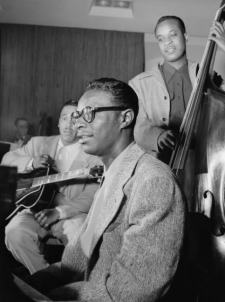
Oscar Moore, Nat King Cole, and Wesley Prince, New York, N.Y., ca. July 1946
JJM You wrote, “Viewed from the perspective of history, that is to say, backward, it was almost a foregone conclusion that the King Cole Trio was destined to become the most popular ‘combo’ of its era.” Why?
WF If you look at the trends from the mid-to-late 1940s to the time of the coming of Elvis, swing and dance-oriented bands were still hugely popular, even though there were other things happening, and those new things included popular vocalists like Frank Sinatra and Billy Eckstine. Also at that time bebop was becoming popular and entrenched in the culture. You didn’t have to be a jazz fan to know who Dizzy Gillespie was in the late 1940s – jazz wasn’t a cultish thing. And Louis Jordan and rhythm and blues were emerging as the latest permeation of what was called “race music.”
What set the Trio apart from the rest of the music world at the time is that they played all of that – swing, bebop, and rhythm and blues – which meant they could compete with Sinatra, Dizzy and Jordan all at the same time, and he was eating their lunches. He is the only musician who was relevant in every one of those fields. So, no matter what kind of music you liked, there was some aspect of the King Cole Trio that would have appealed to you, which is why they were destined to not only appeal to the smaller subdivision of the Black market or the jazz audience, but to everyone. Some of the more taciturn critics were complaining that he was deserting jazz, but he played all these styles without compromising his music at all. He was able to keep growing without really losing anything.
JJM You describe the first years at Capitol as the “Golden Age” of the Trio, and remind readers of the enormity of their creative output for the label from the outset. How were they able to create so much music?
WF A couple of reasons for that. One is that they had been together for six years before coming to Capitol, and they played together every night for hours and hours. Nat was a voracious consumer of music. He knew everything that was happening – every new song from a movie, every new song on Broadway, and every old song. Like Sinatra he was very hip to standard songs way before that became a trend, and way before jazz musicians were doing songs by Jerome Kern he was finding great songs to play. So, he had a ton of material, including Nat’s own originals.
The other reason Nat was so prolific and productive in the studio was that he was really friendly with Glenn Wallichs and Johnny Mercer, who ran Capitol. This is something that often gets overlooked. We tend to think about a creative artist as being in opposition to his record company, and everybody always talks about how record companies stifle creative musicians and their creativity, but Nat, Wallichs and Mercer were always on the same page, and were always in favor of anything new that they thought would sell records. They were willing to let Nat record as much as wanted, and would then be very selective about what was actually issued.
What makes the Mosaic package I referred to earlier so important is that it included so much material that wasn’t available while the Trio was active, or for many years after. That speaks to how they would, for example, record three or four tracks in the studio and then only pick two of them for the record. Or, he would record tracks and if he wasn’t happy with them he would come back and do them over again. Nat was always working, always refining. His earlier record company, Decca, wouldn’t have let him do that. They couldn’t see the point of recording ten tracks but only issuing four. All of this recording allowed for this great wealth of material which in most cases was being performed live in clubs. This allowed them to be very particular about what songs got released and what songs became hits.
There are occasional stories about how the Trio and Capitol weren’t together on some things. An example is Nat wanting them to issue “There I’ve Said it Again,” but by the time they did the Vaughn Monroe version had already come out, so Nat missed the boat on that. Also, famously, Nat was in conflict with them when he wanted to add strings to the Trio, first on “The Christmas Song,” and then on “Nature Boy,” but Capitol couldn’t see the point, and Nat had to twist their arms. But that’s a rare example of Capitol giving Nat a hard time. Usually they went along with anything he wanted, and were smart to do so because he was their top selling artist until the Beatles came along.
.
A musical interlude…Listen to a 1944 recording of the Nat King Cole Trio playing Harold Arlen, Yip Harburg and Billy Rose’s “It’s Only a Paper Moon.”
.
JJM What are a couple examples of the Trio’s most outstanding recorded performances?
WF “Sweet Lorraine” would have to be one. It was a song Nat learned from Earl Hines, whose band Hines played in at the time, Jimmie Noone’s Apex Club Orchestra, used as their theme song. Nat loved “Sweet Lorraine,” and it was the first song that he really worked on as a singer. There are some very early versions of it – he recorded it two or three times even before Capitol. There is a cute story about him rehearsing it for hours during the time of his engagement at Kelly’s Stable in New York, trying to get his vocal just right. To the end of his life, that was the song that he kept doing.
I happen to love “It’s Only a Paper Moon.” I don’t know exactly when it entered into his working repertoire, but that song is the most brilliant example of the incredible sound he got with Oscar Moore, who was his partner on the guitar for ten years. Working together they come up with a sound that is not just Nat on piano and not just Oscar on guitar, but the sound of them playing their instruments together and so personally – it’s almost as if they invented a whole new instrument while playing together simultaneously.
JJM Your book pays a lot of reverence to Oscar Moore, and he was indeed a brilliant player. The King Cole Trio was officially retired in September 1951, but in a sense the Trio was doomed from the time Moore quit it in 1947. Is it possible Nat would he have kept the Trio together if Moore had stayed?
WF That’s a point I speculated about in the book. Obviously Nat had to grow in new directions and do new things, which he was already doing by the time Oscar left in 1947, but at the same time he loved playing with Oscar so much and he knew that the music they played was so unique and special that part of me thinks that if Oscar had never left, the Trio would have gone on forever. We will never know, but certainly the fact that Oscar left was a step toward eventually moving beyond the Trio, although Nat kept it going for a few more years. Within a year-and-a-half he not only had different musicians – the bass player Johnny Miller left too – but he added a fourth musician, the Latin percussionist Jack Costanzo. The result was a completely different band with a completely different sound, which would make sense – Nat wouldn’t want to keep replicating what he had already done.
JJM Cole claims he never set out to sing, rather it was something he just tried, out of a whim. When did he stand up to sing for the first time?
WF He said that it was one of those things that happened as a result of constantly being out in front of the public, playing for a minimum of four hours every night, six nights a week. He felt they just had to try something else because there was all this time on stage and people began requesting him to sing songs, but he never got into the business to be a singer. There is a great episode from a 1960 television broadcast of This Is Your Life in which some of his band members talk about how Nat tried to sing with his big band in 1935 but everyone in the band thought he was so terrible that they wouldn’t let him sing. So, singing was something that he tried, and when he saw it got a good audience reaction he worked at it, because he was for doing anything that made people happy.
Louis Armstrong sang for pretty much the same reason. In Louis’s case, I think he enjoyed singing more – it was something he always wanted to do – but he also saw that people loved it, so he kept doing it. Hopefully that isn’t something jazz has gotten away from, the idea of doing something just because the public wants to see you do it, or doing something just for the sake of pleasing the public. That should always be a part of jazz.
.
A video interlude…Watch a c. 1956 televised performance of Nat King Cole sing eden ahbez’s composition “Nature Boy,” which was a #1 hit for seven weeks in 1948
.
JJM You write quite a bit about “Nature Boy,” which you wrote “had more to do with the course of changing his career – from jazz pianist to popular singer – than any other factor”…
WF “Nature Boy” was a huge hit. It was one of the biggest records anyone ever had, and one of the signature hits of the post-war era. It was a record that captured everyone’s attention and other singers took notice of and wanted a piece of – Sarah Vaughan did a version of it, and Sinatra did a version of it. Bing Crosby and Perry Como were asked to record it but, while they were certainly conscious of it, they both decided it was too late for them to catch up to Nat’s record.
The song was such a blockbuster, and it was purely a vocal expression – he didn’t play piano on that record at all, which was for the first time – and because it was so successful meant that people wanted to hear him sing more, cementing the direction he was already going, especially with “(I Love You) For Sentimental Reasons,” which was the first number one hit by a solo Black singer, male or female. The only comparable hits were by groups like the Ink Spots and the Mills Brothers. “Mona Lisa” and “The Christmas Song” also did a lot to cement the move to his becoming a singer, which meant that moving forward he was not just a piano player who happened to sing a little, now he was a singer who plays piano for part of the evening as well. People expected to hear him sing.
JJM He worked really hard at transforming himself into a star singer, but you wrote that he was starting to worry audiences would start to “forget that he ever played the piano.” Was he conflicted about this?
WF I’m not sure. Even though he doesn’t play piano on most of his records after 1951, every time he performed live he always played piano, so even though he no longer played in a trio format, it’s not as if he ever stopped playing. Playing a few numbers on the piano was always a part of every show. He was happy to give the people what they wanted, and, like Louis Armstrong, he was out there in the cause of happiness. But there is no question that he loved the piano and he didn’t want people to ever forget that he was a piano player, and he did keep recording as a pianist – he made about four records that were primarily piano records, and every time he released one there would be an interview with Downbeat where he would say that he doesn’t want people to forget that he was a piano player first.
JJM Who would he hire to play piano on his later studio recordings?
WF The two guys he would usually try to get were Jimmy Rowles and Bill Miller, and once in a while Buddy Cole. When I interviewed Bill Miller he told me that whenever he played for Nat he always tried to play piano as close to Nat as he could. I didn’t find out until I was writing the book that Hank Jones played piano on the St. Louis Blues album, which is tragic for me because I interviewed him many times and I would have loved to have asked him about that, but I didn’t know.
Because Nat was concentrating on his singing he didn’t want to be distracted by playing, so that’s why a lot of those post-1951 vocal records feature other piano players, and he knew that Rowles and Miller would have his back, but then he would turn around and play the piano parts himself in public during performances. There are all kinds of examples of him playing piano on live television and during concerts. During live performances he would play numbers that he hadn’t necessarily done in the studio, so the total output of Nat as a piano player beyond the studio recordings is a lot larger than people realize – he played on every performance and during every TV show he is almost always sitting down at the piano at least half the time.
JJM You wrote that Sinatra “would never catch up with Cole in terms of sheer sales volume, especially with regard to singles – such was probably not even his ambition. Sinatra was a fiercely competitive man, but he was smart enough to realize that trying to consistently out-sell Cole would have been a fool’s errand.” To what extent were Sinatra and Cole competitive?
.
A musical interlude…Listen to a 1961 recording of Nat King Cole singing Billy Strayhorn’s “Lush Life”
.
WF They were only competitive in the sense they were trying to reach the same audience, but they didn’t cancel each other out. It’s not like somebody is going to go to the store and buy a Nat Cole record and not buy a Frank Sinatra record. Capitol was wise – and the singers were also wise – to not do each other’s songs, so there would be a clear distinction. The interesting thing is that Sinatra starts strictly as a ballads singer who isn’t expected to do rhythmic or swinging songs, and Nat Cole starts off strictly as a rhythm singer who is not expected to do ballads, and gradually they each take on the other’s mantle. By the 1950s, Frank is doing all these swinging numbers and Nat is doing all these ballads. Lo and behold, to everyone’s surprise, Nat turns out to be one of the great ballad singers of all time, and Sinatra turns out to be one of the great swingers of all time, which is something that nobody expected. So they gradually moved into each other’s territory in that aspect. But yes, especially when Nat is mostly foremost a singer, they are definitely trying to reach the same audience, they are always trying to reach the same record buyer, and, again, the two careers really complimented each other – it isn’t like they cancelled each other out to any extent.
JJM As you say, Cole was a swinging singer who eventually became a ballad singer, two of which, “Lush Life” and “Stardust,” were so popular that Sinatra didn’t see any point in recording them…
WF Yes, that’s right. It’s funny, the Sinatra attempt at “Lush Life” has finally been issued, and people have talked about this as if it were a lost masterpiece. No, it’s not a lost masterpiece, it’s a lost dog. It was totally the wrong song for Sinatra, and he doesn’t seem comfortable with it. It’s not because the song is complicated, and it’s not because of his attitude toward the song, it just doesn’t work – it isn’t the right song for his voice, and he was smart enough to realize it. It is interesting from an academic standpoint that they finally released it, but it doesn’t really give us anything in terms of our enjoyment of the song. He was very smart not to do it.
The same can be said with “Stardust.” It’s worth pointing out that Nat didn’t want to record “Stardust” either, but that was a case where he let his producer talk him into it, and it proved to be one of the few cases where Nat was wrong. Usually Nat’s instinct was unerring, but he had a very beneficial relationship with the producer Lee Gillette. It is worth pointing out again that, despite this being the era when producers and A&R people generally called all the shots, in his own way Nat had real control over everything he did – nobody ever forced him to sing a song, if he didn’t want to sing it, he wouldn’t sing it. Some songs he recorded as favors that he didn’t particularly like, but it was his decision.
“Stardust” is a great example of him thinking that recording it was a bad idea, but he went along with Gillette’s idea, and then admitted that he was right. There is a quote from Sinatra somewhere about not wanting to sing “Stardust” because so many people had already sung it, and even though he had that interesting idea of singing just the verse, it is not a satisfactory rendition of the song. It is interesting, but when you want to play “Stardust,” you aren’t going to play Frank’s version, you are going to play Nat Cole’s version.
JJM Nelson Riddle was crucial in the careers of both Cole and Sinatra. How did he approach their talents differently?
WF Nelson said that Nat was a less complex person than Sinatra – obviously Sinatra was a very complicated guy – and therefore what he wrote for Frank was way more complex. I don’t necessarily always see that. Some arrangements for Nat are fairly straightforward, like “Almost Like Being In Love,” but there are also complex songs like “To the Ends of the Earth” and “The Shadows.” The Cole Porter song from Can Can, “I Am in Love,” has this polyphonic sound that is similar to some pieces he wrote for Sinatra, like “Not as a Stranger,” which has a big polyphonic chorus in the middle of it – a very classical sound, much like Ravel and Debussy.
So, Nat and Frank were not in competition – I don’t think there was ever an instance where they were both planning to record the same song as their next single – but there was eventually a competition for Nelson’s time. What ultimately came between Nelson and Nat was that he started getting better paying work in movies and television, and it became clear he had to pick between Nat and Frank because that’s all he had time for. It’s not exactly like he gave up working for Nat and then concentrated exclusively on Frank. In fact, there was a period in the early 1960s when Nelson had officially stopped working with Nat at around the same time Sinatra started Reprise Records, so he didn’t really work for either one of them for a few years. It is entirely possible that if Nat had lived he and Nelson would have got back together for a special project in the same way he and Frank did in the 1960s, when Frank was working with a variety of arrangers.
.
A video interlude…Watch Part 1 of the 1961 Canadian television broadcast of Wild Is Love
.
JJM Cole was a success in so many ways – on records, of course, but also on radio, film, and television. He had an eye out for business opportunity that could take advantage of all his talents and popularity. One project that I found fascinating is the 1960 album Wild is Love, which you write extensively about in the book, that may best be described as a concept album about love…
WF Yes, very few people get that album. So many think it is weird the way he narrates between the tracks, and others say the songs weren’t very good, but it is important to see the totality of it. There is a version of it on YouTube that I recommend watching because it is better seen than just heard. His involvement in this just goes to show that Nat was always up for something different, and he happened to have a fondness for the larger story, and an energy to take on projects that took him beyond just a bunch of songs. They would use songs to tell a story in a larger framework, which was the same thing that drove Sinatra to make musical movies and eventually into the future on “Trilogy.”
Nat loved Manhattan Tower [Gordon Jenkins’ 1946 recording that combined original music and spoken narration/dialogue]. One of the stories that his wife Maria would tell was how they were listening to the radio on their first date and that recording was played on the radio, and he just loved it. Wild is Love was the kind of project he liked because he didn’t have acting chops, and even if he did the fact he was Black meant there would be a shortage of roles for him. So that is another reason why Wild is Love was such a great benefit to him, because it allowed him to do something dramatic that did not take him outside of his comfort zone as a performer. For him to do Shakespeare or Eugene O’Neill would have been beyond his capability.
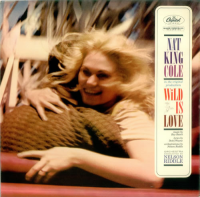
The 1960 Capitol recording Wild is Love
JJM He had such a large vision for this project. He imagined Wild is Love as something he could actually put on Broadway…
WF Yes, he kept experimenting with that. It didn’t quite work out but ultimately he created something that was bigger than a bunch of songs, or bigger than a nightclub set. Eventually he created a whole package that involved backup singers and orchestra, and it had a theme to it, so it was somewhere in-between a Copacabana night club act and a full-blown musical theater show like Camelot.
Something that I completely overlooked until a few months ago was that when Nat created this ensemble of singers and dancers for this show – who he called the “Merry Young Souls” – these groups were very much in the wind during the early 1960s. Groups like the New Christy Minstrels were generally thought of as being a part of the folk movement, but if you look at many of the musical variety shows from this time you will see these groups of clean-cut young people sometimes doing folk music, but as an entity unto themselves. That is what he latched on to, and his version was the Merry Young Souls.
JJM Cole’s immense popularity came during the height of the civil rights movement. There are a couple of famous stories that you write about in the book, particularly regarding his challenges of living in a white neighborhood, performing in front of segregated audiences, and being attacked on stage, but his actions and these events weren’t necessarily appreciated by everyone who supported the movement…
WF Yes. Sometimes people get eclipsed by their own innovations. For example, in the 1930s Louis Armstrong seemed like the hippest, most progressive guy, but thirty years later, to a lot of younger people he seemed old-fashioned, and it is mainly because he is succeeded by his own progeny, and something like that happened to Nat. In 1935, Nat would have thought that the idea of being able to play in front of a general audience including white and Black people was just unheard of.
From the time he was a kid in the 1930s, you could count on one hand the number of Black performers who had risen to the point of being known by white audiences. It was such a rare thing. And by the 1950s people in the movement were giving him grief for playing before segregated audiences which, as Nat pointed out, was not as if he had an alternate choice. Performing in front of segregated audiences was the law of the land, and there was nothing he could do about that. Even Bruce Raeburn – a white man who teaches jazz history at Tulane – talks about how he would get arrested in the early 1960s whenever he sat in with a black band because it was against the law. So it’s not like Nat had the ability to play before integrated audiences.
It ultimately took a pushy white guy like Norman Granz to stand up to it, and frankly Norman didn’t have as much at stake as Nat did. Norman was always going to play for a special audience with his particular concert format, whereas Nat was truly trying to reach everybody. This situation was out of Nat’s control. One guy who came to Nat’s defense was the famous Olympian Jesse Owens, who said there was no way we would help our cause by avoiding white audiences. Unless white people can see what we can do, then what’s the point?
The tour when Nat was attacked in 1956 was his own production, and it was the first time that he arranged an entire tour where it wasn’t the traditional model of Black people contributing their labor and white people making all the money – this was a clear cut case where the Black entrepreneur was in charge, and who was taking the biggest percentage of the profit. So, that’s another reason why he took whatever audiences he could get. No performer on Nat’s level in the 1950s was in a position to say “I refuse to play for segregated audiences.” The only outcome would be that the booking would be cancelled. It’s not like they would say, “Oh gee, I guess we begrudgingly have to integrate.” It wasn’t legal. It wasn’t the law of the land.
JJM While Cole was criticized for playing in front of segregated audiences, the white segregationists and white supremacists saw the power of Cole through his performances…
WF Yes, it’s interesting that white supremacists were in tune with the fact that Nat was a force for integration even when he was playing before segregated audiences. This was not something that some of the Black militants saw, which was an interesting turn of events…
JJM Right. He had an image of being a successful Black family man who was singing romantic love songs and having a great deal of success on television and other media. While that wasn’t a militant stance, it was effective in breaking things down. So, he had a quiet but powerful role in the movement…
WF Yes. He wasn’t active in the movement. Nat was from the Alabama and then the Chicago underclass, so he didn’t have a notion about challenging the status quo. Even his own wife, who came from the Black bourgeoisie, was more inclined to challenge the white status quo than he was, just because when you grow up a certain way it doesn’t even occur to you that such things are possible.
JJM Cole had a lifelong addiction to cigarette smoking, which was ultimately his demise, succumbing to lung cancer in 1964 at the age of 45. Some have said he thought cigarette smoking helped his singing. Is that right?
WF I don’t know for sure. He would say things at times in interviews just to be amusing, but I have no idea if he actually thought that. Maybe he did. He was certainly addicted to smoking.
JJM What is Nat King Cole’s legacy?
WF I give credit to Adam Gopnik, who wrote a beautiful blurb that we used on the back of the book, and in it he said that Nat originated “new styles of be-bop-to-modern jazz piano; creating with his trio a template for R&B; renewing the American song book in its eclipse; becoming one of the first true cross-over artists, and not least, ending as a quiet hero of the civil rights movement. Artists as different as Bill Evans, Chuck Berry, and Sam Cooke all owe him an incalculable debt.”
Every piano player as well as every soul singer were influenced by him. Maybe now it has moved beyond that, but I remember almost every time I would watch some new star like a Peabo Bryson go on a television variety or awards show in the 1980s, they would seemingly always do a Nat King Cole ballad like “When I Fall in Love,” or “For All We Know.” He was just the industry standard, and may still be to this day.
.
___
.
“Answer me oh my Love,” by Christel Roelandt
“To the end of his short life, he never stopped experimenting, he never stopped varying the mixture; even his final work, the L-O-V-E album, released even while he was in the hospital with just a few weeks to live, was a whole new concept, a set of Eurocentric swing numbers unlike anything anyone had ever done before…Cole could do many things; he could play the piano, he could sing, he could lead a band and write arrangements for it, he could write songs, he could run a business empire that included production and publishing firms. He could do virtually everything except stand still.”
-Will Friedwald
.
.
Watch a 1955 performance of Nat King Cole performing “Straighten Up and Fly Right,” from the film The Nat “King” Cole Musical Story
.
.
___
.
.
Straighten Up and Fly Right: The Life and Music of Nat King Cole
by Will Friedwald
.
.
Will Friedwald writes about music and popular culture for The Wall Street Journal, Vanity Fair, Playboy magazine and other publications (and reviews current shows for Citiview). He also is the author of nine books including the award-winning A Biographical Guide To The Great Jazz And Pop Singers, Sinatra: The Song Is You, Stardust Melodies, Tony Bennett: The Good Life, Looney Tunes & Merrie Melodies, and Jazz Singing. He has written over 600 liner notes for compact discs, received ten Grammy nominations, and appears frequently on television and other documentaries. He is also a consultant and curator for Apple Music. Current books : The Great Jazz And Pop Vocal Albums (Pantheon Books / Random House, November 2017), Sinatra: The Song Is You! – New Revised Edition (Chicago Review Press, May 2018) and Straighten Up and Fly Right: The Life and Music of Nat King Cole (Oxford University Press, May 2020).
.
.
Click here to read an excerpt from Straighten Up and Fly Right: The Life and Music of Nat King Cole
.
.
___
.
.
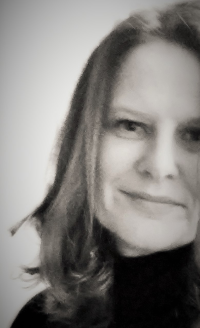
Painting of Nat King Cole courtesy of Christel Roelandt, a Belgian painter from Ghent in Flanders. Since 2006 she has lived by the Mediterranean in Beirut. Her work focuses on the human form; faces and nudes, and finds inspiration by all things beautiful and often by books, music and films.
.
.
This telephone interview took place on August 13, 2020, and was hosted and produced by Jerry Jazz Musician editor/publisher Joe Maita.
.
.
.




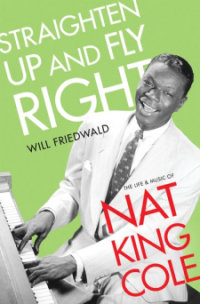
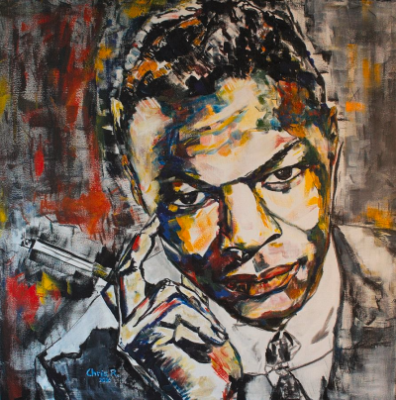




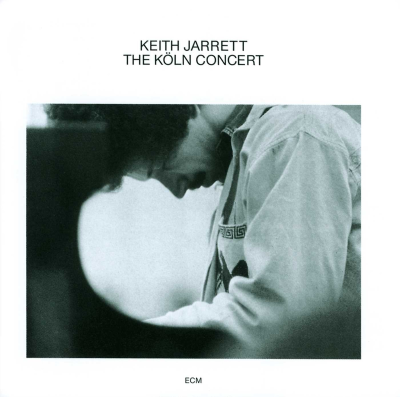




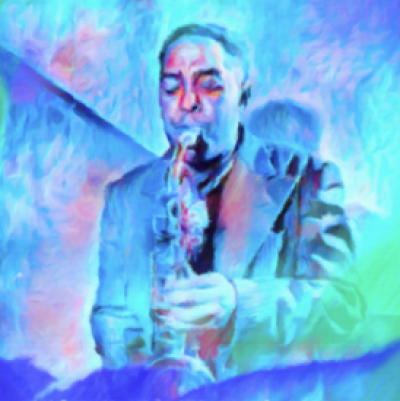
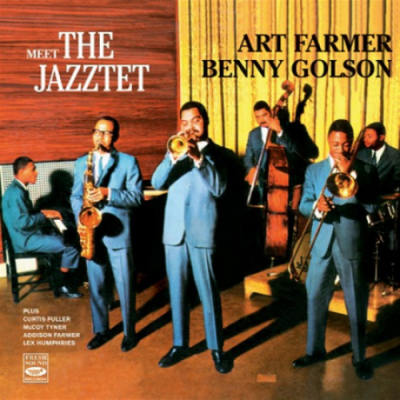




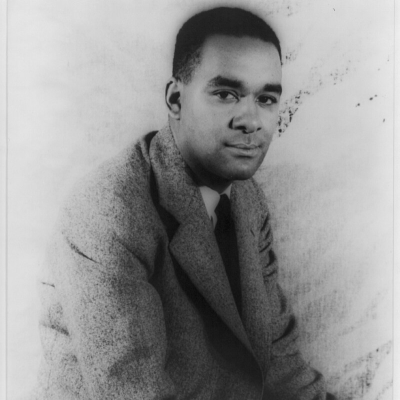
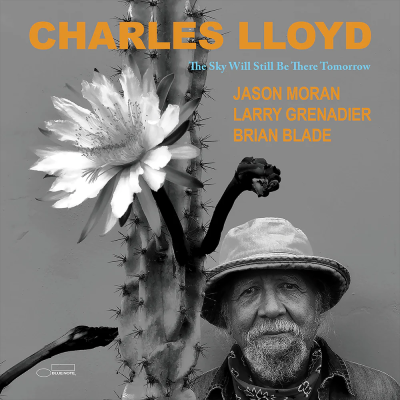
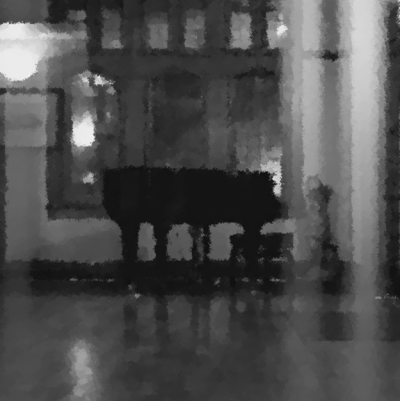




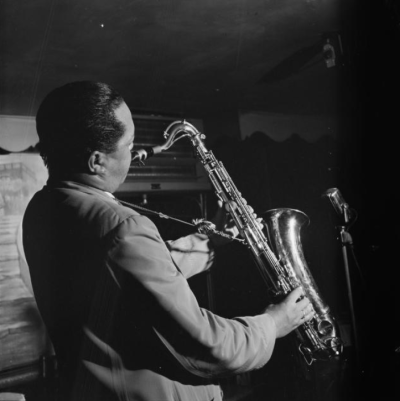



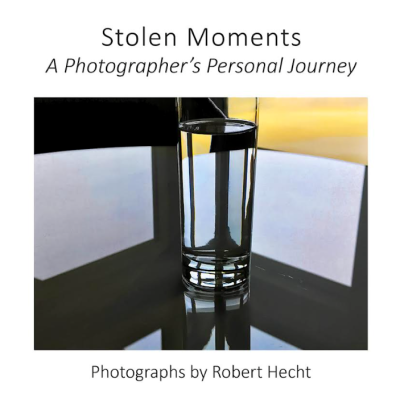

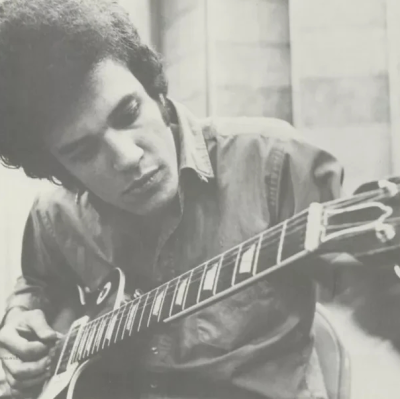







Thank you, Joe Maita for including my painting “Answer me, oh my Love” in this great interview. I so enjoyed this interesting feature and the selection of songs here. Yes, Nat King Cole was all of that and truly unforgettable and timeless.
Christel Roelandt
Fine piece!
But why does everyone skirt around the fact that Billy Strayhorn hated Nat Cole’s recording of his song – as too slushy?
Reference is made in this excellent interview to the pianists who played for Cole’s recording sessions particularly in the post 1951 period. Did they mean to refer to pianist Buddy Cole (not “Buddy Clark”) who was a well known and very active studio musician during this period? A wonderful interview and I will definitely be buying this book. Great to see the TV footage from the CBC as well!
Hi Alan…Thanks for pointing out the “Buddy Clark” error made during the transcription. I corrected it to read Buddy Cole, which is of course correct. Glad to read that you enjoyed the interview. JJM
I was a fan of Cole in the 50s and 60s, but my dad was a fan of his earlier performing with his trio. He used to say of Cole, “It’s too bad he began singing.” Later, after hearing the earlier trio recordings, while I didn’t agree with my dad, I understood where he was coming from.